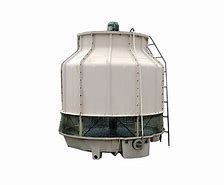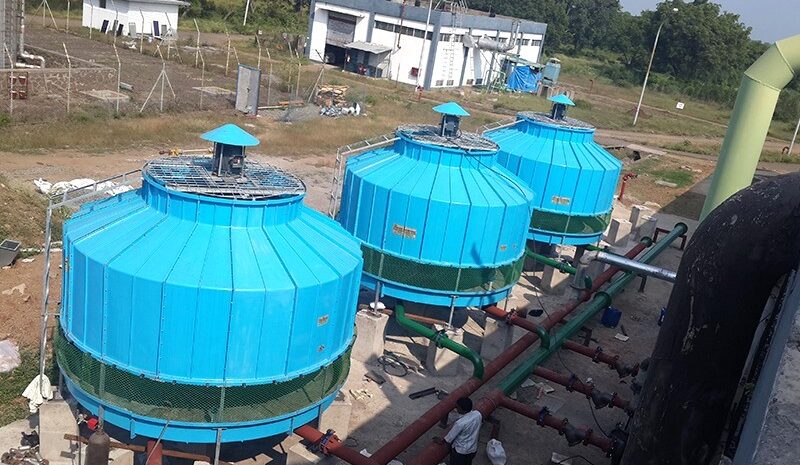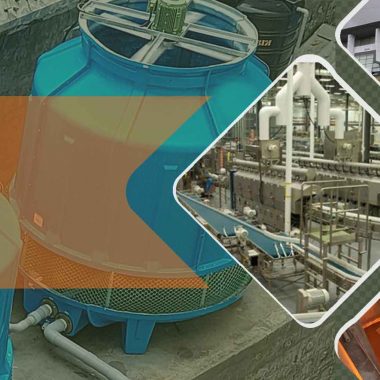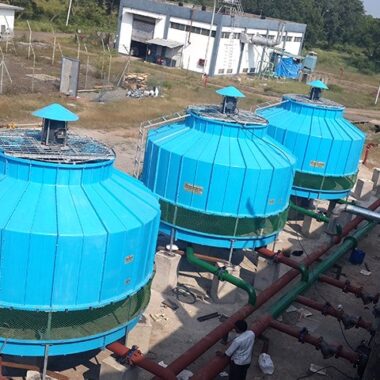Impact of Climate on Round Cooling Tower Performance
Impact of Climate on Round Cooling Tower Performance
The execution of round cooling towers can be altogether influenced by the prevailing climate conditions within the region where they are introduced. Here are a few key variables to consider regarding the impact of climate on round cooling tower performance:
1) Temperature:
Ambient air temperature plays a crucial part within the cooling process inside the tower. Higher surrounding temperatures result in decreased temperature differentials between the cooling water and the air, influencing the generally cooling efficiency of the tower. Round cooling towers may encounter reduced execution amid periods of extreme heat, leading to diminished cooling capacity and increased energy consumption.
2) Humidity:
Humidity levels within the surrounding air affect the rate of evaporation and the cooling efficiency of the tower. In ranges with high humidity, such as coastal regions or tropical climates, the evaporative cooling handle may be less successful, resulting in lower cooling tower execution. Conversely, in bone-dry or dry climates, where humidity levels are low, evaporative cooling can be more effective, leading to upgraded cooling tower execution.
3) Wind Speed and Direction:
Wind speed and heading can affect the airflow through the cooling tower, influencing heat transfer and cooling efficiency. Solid winds can improve airflow through the tower, improving heat dissipation and enhancing cooling execution. Be that as it may, excessive wind speeds can moreover cause discuss recirculation or disrupt airflow designs, leading to inefficiencies or expanded commotion levels.
4) Precipitation:
Rainfall and other forms of precipitation can affect the operation and performance of round cooling towers. Heavy rainfall may increment the water load on the tower, affecting water distribution and evaporation rates. Also, precipitation can present contaminants or debris into the tower water, possibly leading to fouling or corrosion issues in case not properly overseen.
5) Seasonal Variations:
Seasonal changes in climate, such as temperature variances, humidity levels, and wind designs, can affect cooling tower execution all through the year. Round cooling towers may involvement diminished efficiency amid hot summer months or periods of high request, requiring adjustments to working parameters or support plans to optimize performance.
6) Environmental Conditions:
Environmental factors such as air contamination, saltwater introduction, or industrial emissions can moreover impact cooling tower execution and life span. Corrosion, fouling, or material degradation may happen more rapidly in harsh environmental conditions, requiring extra maintenance or corrosion control measures to ensure the cooling tower components.
Understanding the nearby climate conditions and their potential affect on circular cooling tower execution is fundamental for designing, operating, and maintaining these systems successfully. By considering climate components during the plan and operation of round cooling towers, administrators can optimize execution, upgrade efficiency, and prolong the lifespan of the hardware.






How is the efficiency of a cooling tower measured? - Cool Fab Equipments May 06, 2024 at 3:14 pm
[…] productivity of a cooling tower is ordinarily measured by assessing its capacity to remove heat from a prepare liquid, usually […]